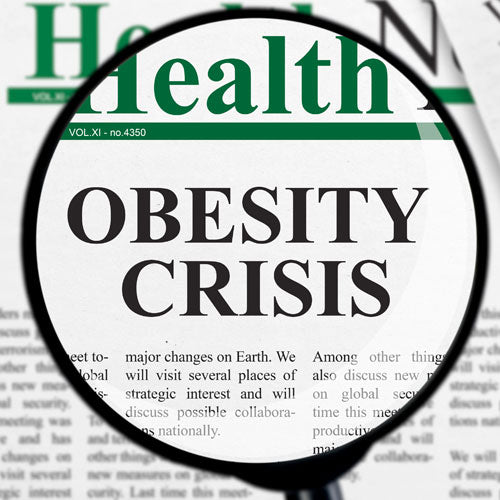
Causes in the rise of Obesity and can it be reduced?
Share
Author: Lesley Smyth (Obesity tutor/presenter/expert)
“Obesity is a term used to describe somebody who is very overweight, with a lot of body fat. It's a common problem, estimated to affect around one in every four adults and around one in every five children aged 10 to 11 in the UK” (NHS). It is a complex multifactorial chronic disease that develops from an interaction of genotype and the environment and has a severe impact on the health of individuals both physiologically and psychologically, with the risk of complications from secondary conditions a major concern.
The 2007 Foresight report, Tackling Obesities: Future Choices predicted that if no action was taken 60% of men, 50% of women and 25% of children will be obese by 2050. So what is causing the rise in Obesity?
- Genetics/biology
- Medical disorders
- Early years
- Modern lifestyle
- The impact of the media
- Food advertising and marketing
- Different types of food
- Hunger hormones
- Stress
Genetics/biology
There have been numerous studies on hereditary links to weight gain and obesity, and it is generally accepted that genes, alongside environmental factors play an important role. The analogy used by George Bray (a leading obesity researcher) when he said ‘the genetic background loads the gun, but the environment pulls the trigger is a much-used expression when discussing the role genetics plays in the rising epidemic.
Individuals diagnosed with obesity have increased fat stores, particularly in the abdominal region. Fat around the middle is the most dangerous place to store fat rather than on the thighs and bottom as it is more indicative of coronary heart disease, type 2 diabetes or insulin sensitivity. The main cause of stubborn fat storage around the abdominal area is hormones.
Can overweight and obesity be reduced?
Yes, overweight and obesity as well as their non-communicable diseases, are largely preventable. A supportive environment and community is fundamental in shaping a person’s choices. Also, making the healthier choice of foods and regular activity more accessible, available and affordable would help a wide range of people.
At an individual level:
- Eat a healthy, balanced diet that includes the right number of calories to maintain a healthy weight
- Engage in regular physical activity - 60 minutes a day for 150 minutes a week for adults (WHO)
- Individuals are advised to make small, sustainable changes to their diet, following general healthy eating principles such as The Healthy eating Pyramid or Healthy Eating Plate for reference
- Portion control is essential
- People should expect to lose no more than 0.5-1kg (1-2 lbs) a week
At the societal level
- Support individuals to follow the previous recommendations, through sustained political commitment and the collaboration of many public and private stakeholders
- Make regular physical activity and healthier dietary choices available, affordable and easily accessible to all - especially the poorest individuals (WHO)
The role of the food industry
- Reducing fat, sugar and salt content of processed foods
- Ensuring that and healthy nutritious choices are available and affordable to all consumers
- Practising responsible marketing, especially those aimed at children and teenager
- Ensuring the availability of healthy food choices and supporting regular physical activity practice in the workplace (WHO)
Long-term behaviour change is essential for developing health, wellbeing, fitness and for the prevention and management of additional medical conditions like diabetes and osteoarthritis.
